Slime Moulds & Fungi at Strumpshaw Fen – June 2024 Overview
2nd June
On the same fallen trunk that we found Badhamia utricularis (actually on a section that had since broken off) — we saw clusters of Stemonitis sporangia and what I am presuming was a Badhamia utricularis plasmodium.
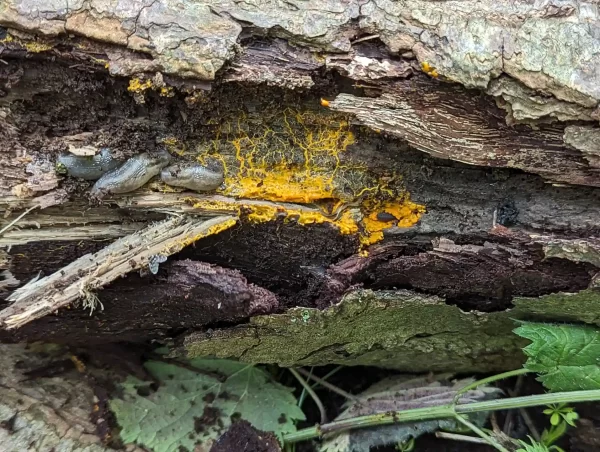
Strumpshaw Fen – 2nd June 2024
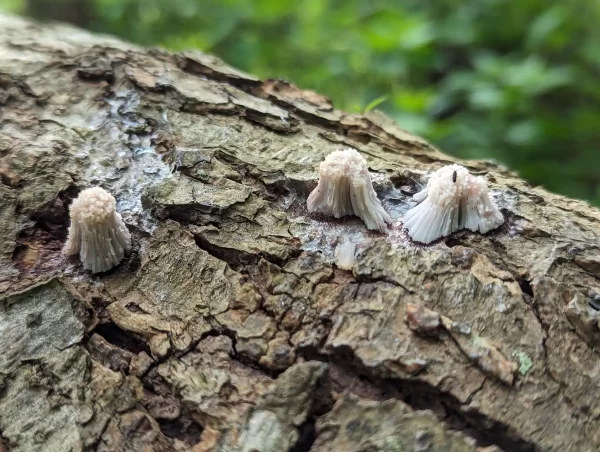
Strumpshaw Fen Woodland – 2nd June 2024
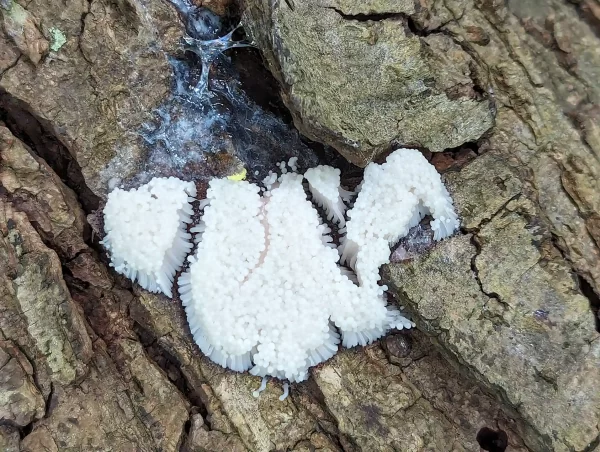
Strumpshaw Fen Woodland – 2nd June 2024
A week later we would find these Stemonitis as more mature sporangia.
Near the Sandy Glade we spotted some Ceratiomyxa fruticulosa.
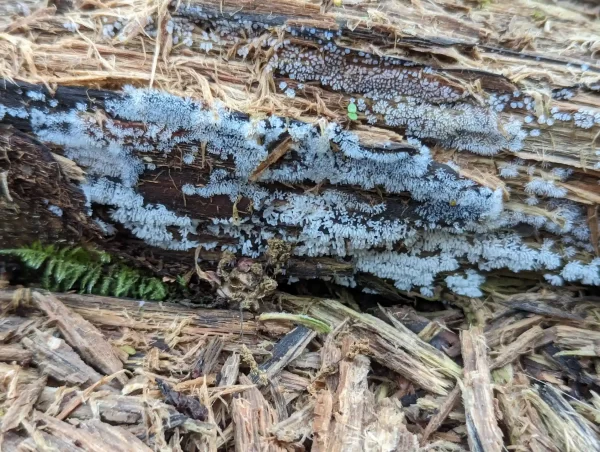
Strumpshaw Fen – 2nd June 2024
After The Outpost another Stemonitis.
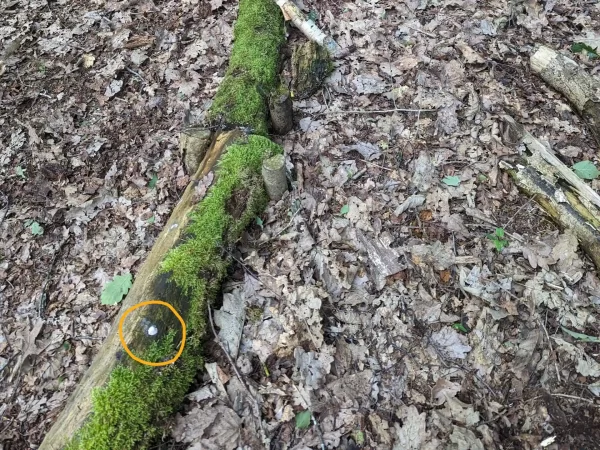
Strumpshaw Fen – 2nd June 2024
I never tire of seeing these wonderful Stemonitis sporangia forms.
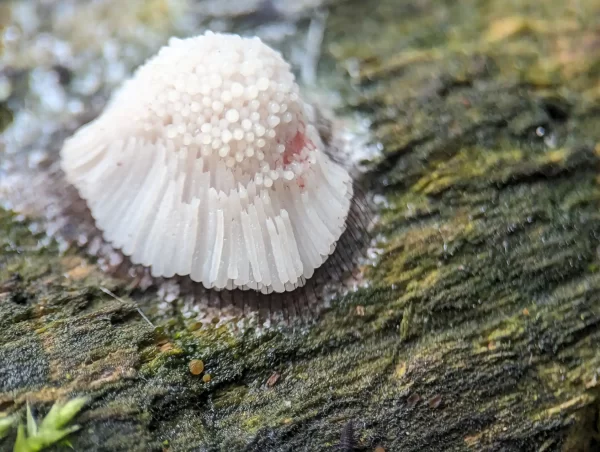
Strumpshaw Fen – 2nd June 2024
A week later all that was left was a tangle of flattened black stalks.
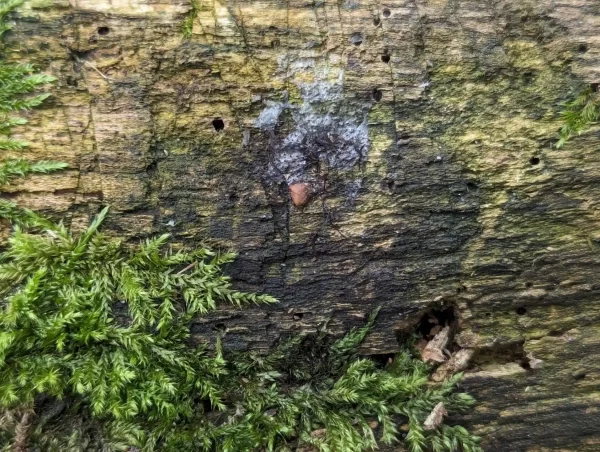
Strumpshaw Fen – 9th June 2024
Further along from The Outpost — towards the end of the trail — some bright orange slime mould aethalia on some unknown disintegrating yellow crust. At least I’m assuming it’s a slime mould — I automatically thought it was a Lycogala but I’m not so certain now.
Physarum rubiginosum ?
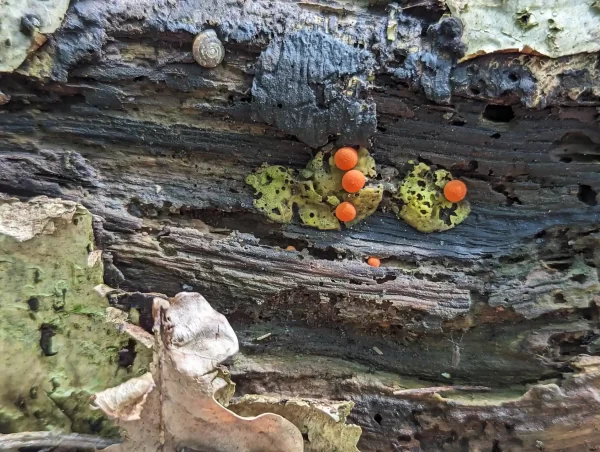
Strumpshaw Fen – 2nd June 2024
Some young white slime mould sporangia on a leaf.
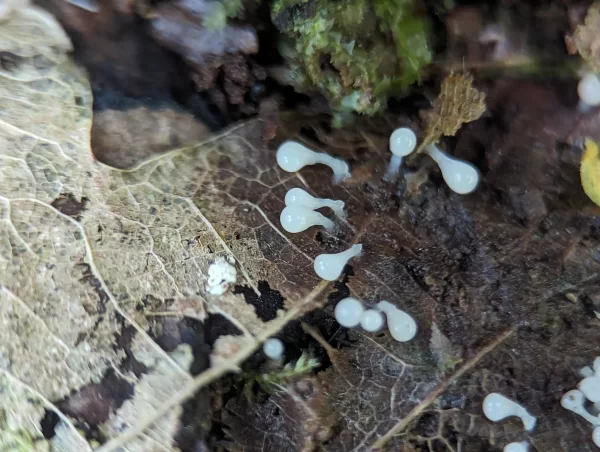
Strumpshaw Fen – 2nd June 2024
Some Fuligo septica plasmodia on a leaf.
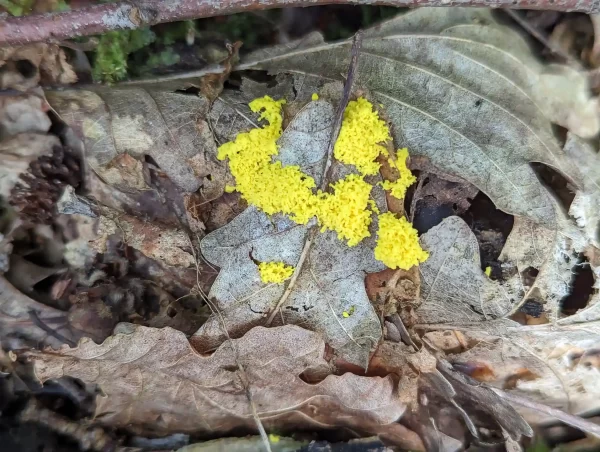
Strumpshaw Fen – 2nd June 2024
And some Calocera cornea on a fallen branch.
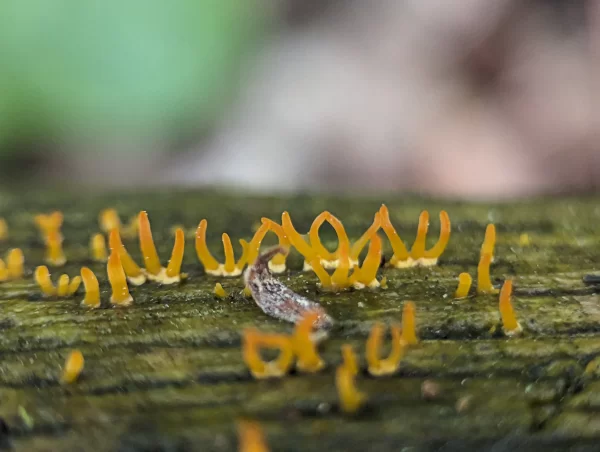
Strumpshaw Fen – 2nd June 2024
9th June
Since a NFSG led fungi foray at the reserve in October 2023 where Cyathus striatus (Fluted Bird’s Nest) was found — on subsequent visits to the reserve we would occasionally check the location to see if there were any new sporocarps and today we were in luck.
In the photos below new sporocarps have grown adjacent to the old nests from last year and one of them had opened up into a nest.
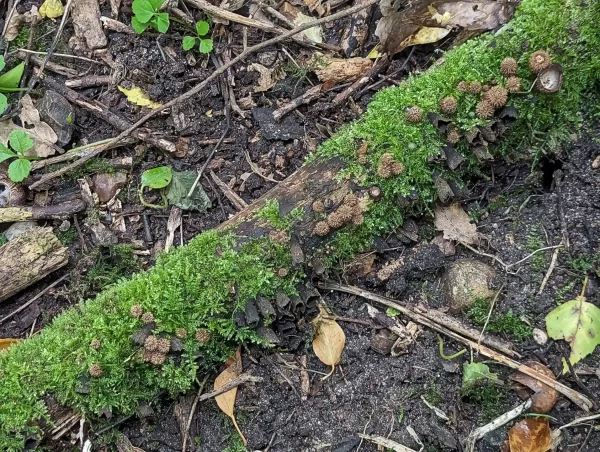
Strumpshaw Fen Woodland – 9th June 2024
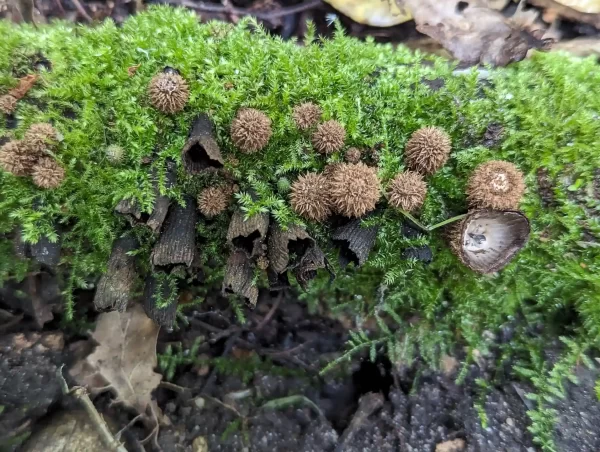
Strumpshaw Fen Woodland – 9th June 2024
At Basecamp — on the same decaying log that we found a fabulous Stemonitis flavogenita — we saw some unidentified young globose white sporangia (centre), with some Ceratiomyxa fruticulosa (right of centre under the globose white sporangia), a small tuft of mature Stemonitis sporangia in spore mass (left of the main area of globose white sporangia) and a solitary Lycogala (left) above the snail.
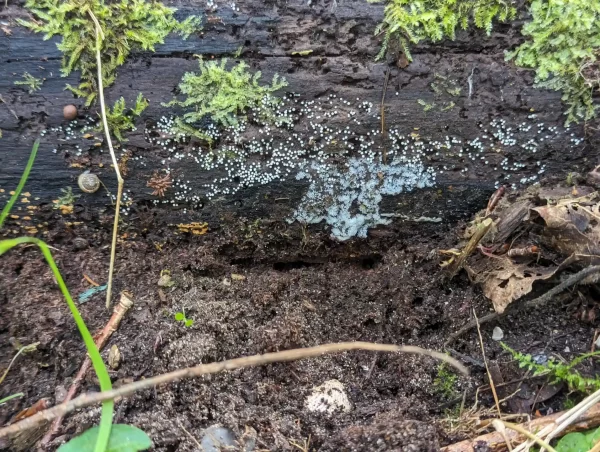
Strumpshaw Fen – 9th June 2024
Close up of the young sporangia.
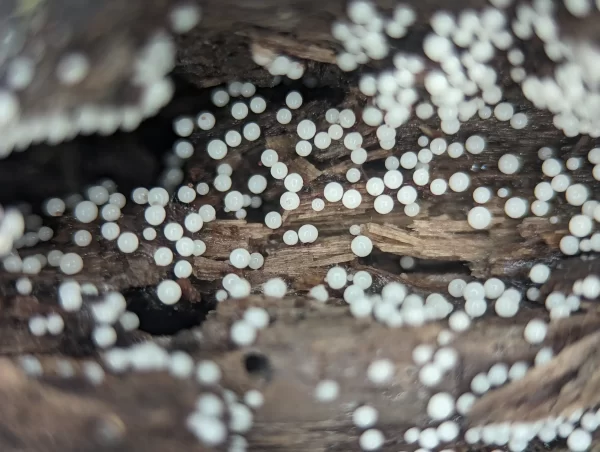
Strumpshaw Fen – morning of 9th June 2024
In the evening these young white sporangia had turned pale translucent brownish vinaceous.
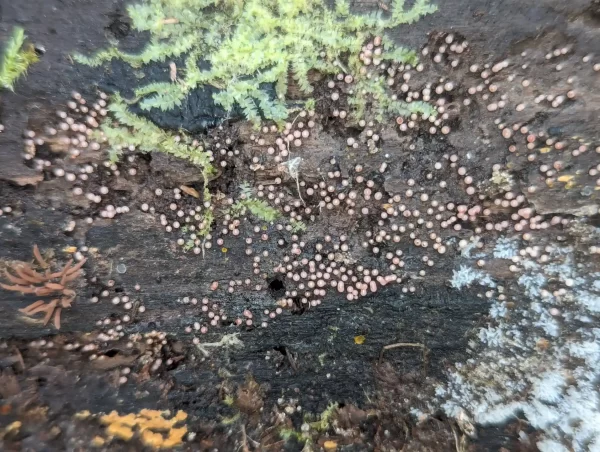
Strumpshaw Fen – evening of 9th June 2024
The photo below is of another mature Stemonitis — on the same log — in spore mass with the capillitial surface net visible at the tips of some of the sporangia where spores have dispersed. The surface net is a structure that supports the mature sporangium and is characteristic of Stemonitis.
Surface net…
https://www.photomacrography.net/forum/viewtopic.php?t=740
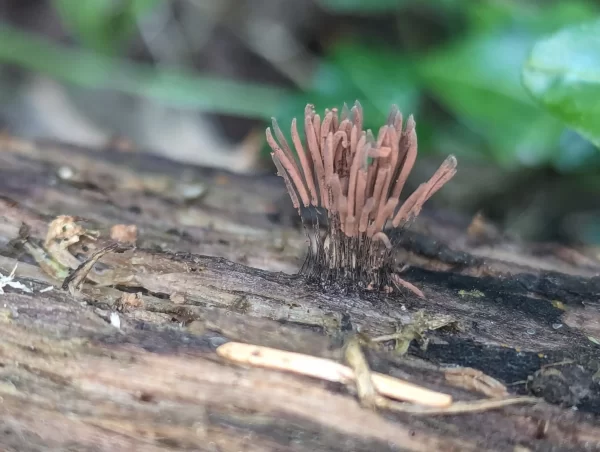
Strumpshaw Fen – 9th June 2024
At the Sandy Glade in the bracken — two Phallus impudicus eggs.
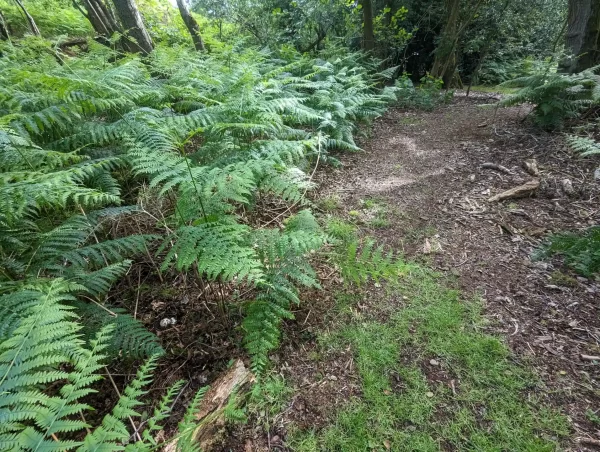
Strumpshaw Fen – 9th June 2024
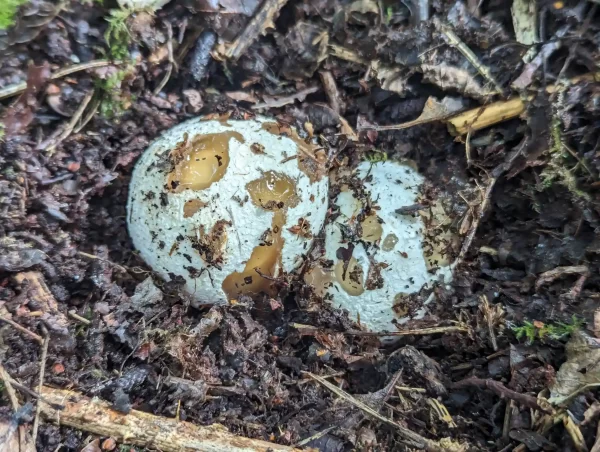
Strumpshaw Fen – 9th June 2024
Some Stemonitis on the rotting rebatement at the end of the drainage channel path. These were somewhat shorter than the other Stemonitis and maybe a different species.
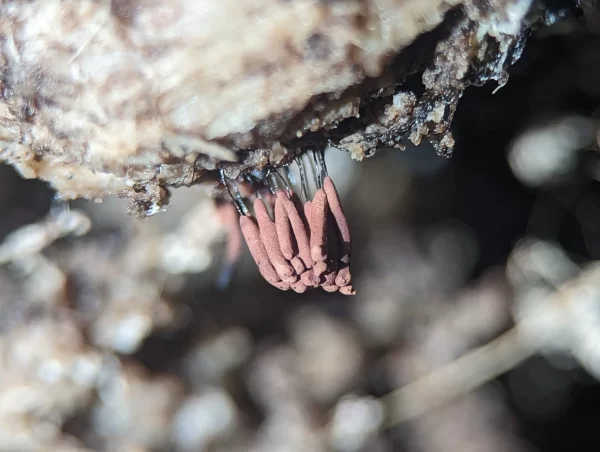
Strumpshaw Fen – 9th June 2024
Opposite The Outpost we spotted a Fuligo septica on a stump transforming into an aethalium.
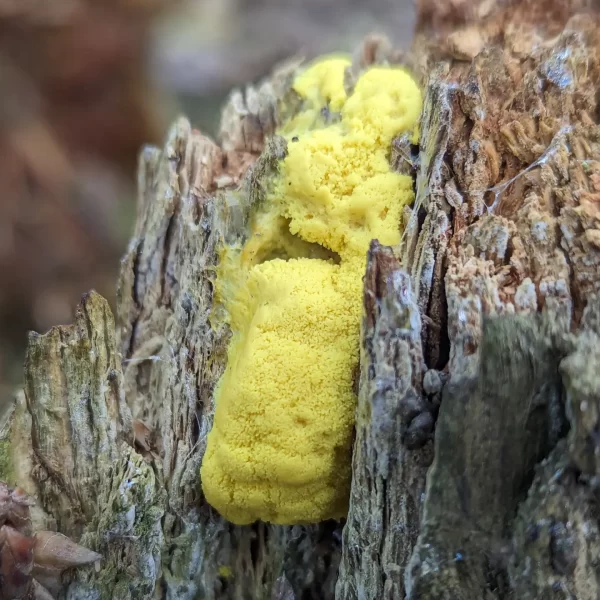
Strumpshaw Fen – morning of 9th June 2024
And in the evening the aethalium had developed a sheeny peridium.
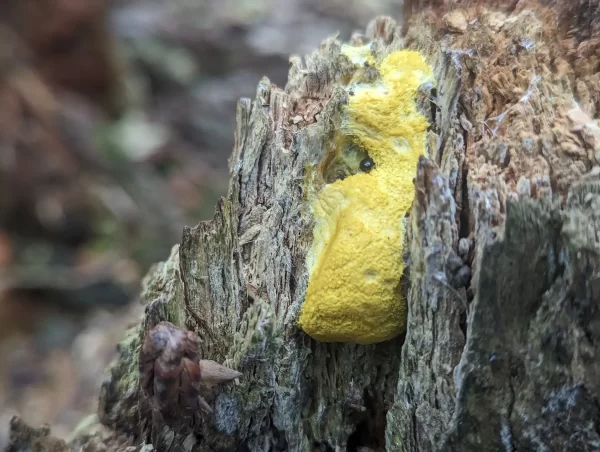
Strumpshaw Fen – evening of 9th June 2024
And on the log near The Outpost where we saw the Stemonitis and Badhamia utricularis a week earlier — a wonderful display of more Stemonitis clusters.
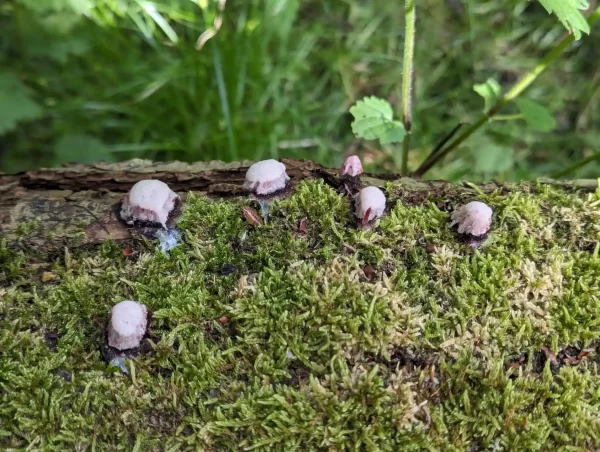
Strumpshaw Fen – morning of 9th June 2024
We came back to the reserve later in the evening to find them a deep vinaceous brown.
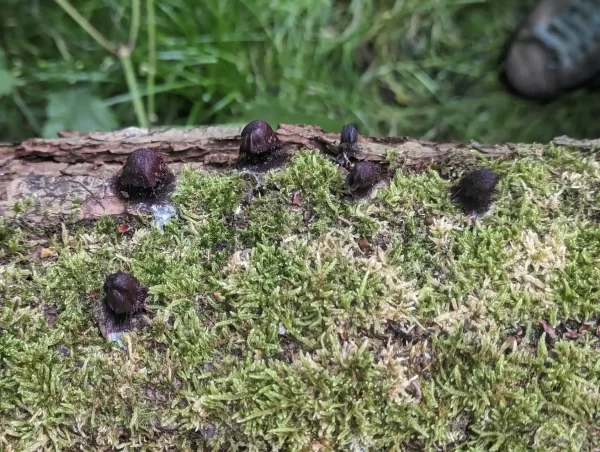
Strumpshaw Fen – evening of 9th June 2024
And a week later mature sporangia in spore mass.
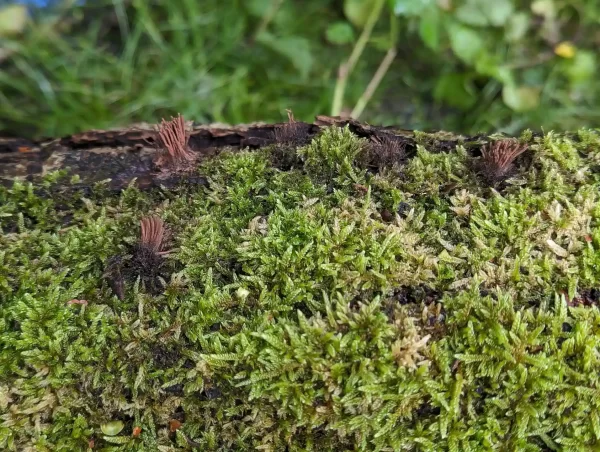
Strumpshaw Fen – 16th June 2024
See more photos of these Stemonitis.
Further on from The Outpost, I noticed some bright red blobs within one of the decaying log piles.
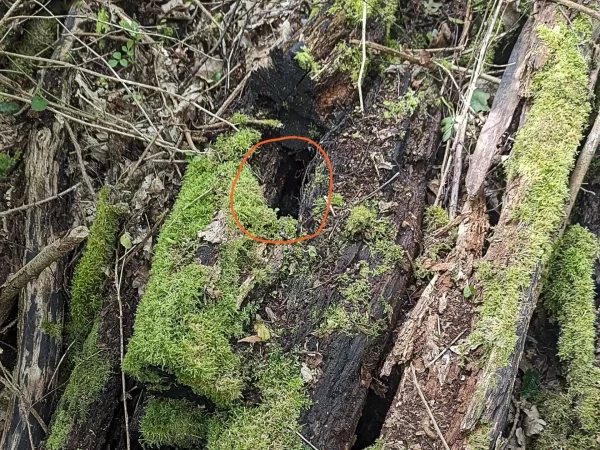
Strumpshaw Fen – 9th June 2024
I automatically assumed them to be a slime mould but they I had no idea what they could be and I wondered if they were a Lycogala — the aethalia were different from Lycogale epidendrum that we usually see and the bright red colour was unusual. A Google Lens search suggests Lycogala conicum which they somewhat resemble — albeit at an early stage?
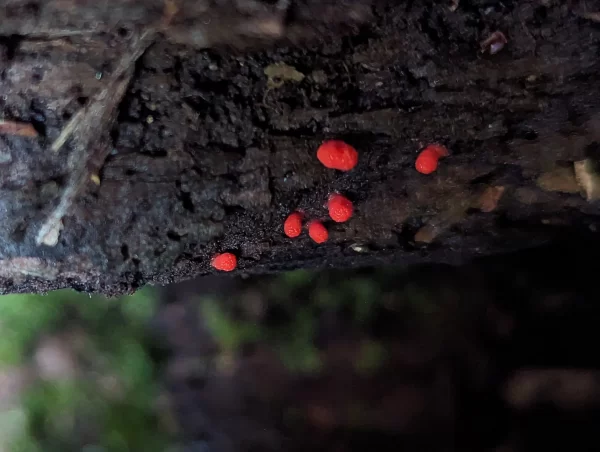
Strumpshaw Fen – 9th June 2024
Some photos of Lycogala conicum at inaturalist.org.
In the trail end area we spotted a cluster of immature yellow Stemonitis sporangia — most likely Stemonitis flavogenita because of the yellow colour.
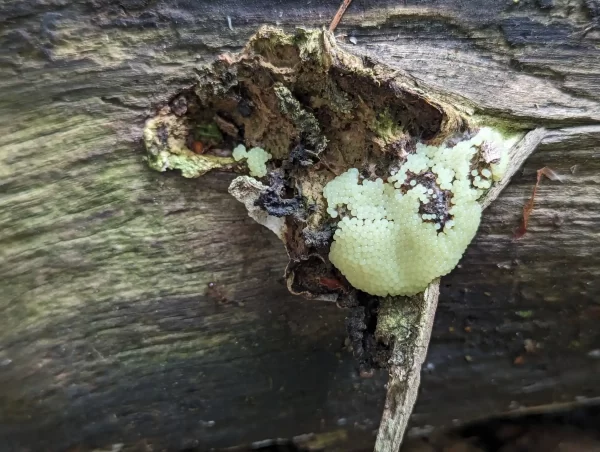
Strumpshaw Fen – morning of 9th June 2024
Later in the evening it had turned to a wonderfully transluscent moist and glistening cluster of sporangia, rose, vinaceous and wine-red in colour. Some of the sporangia — rear of the main cluster in the photo below — still have a yellowish hue to their tips.
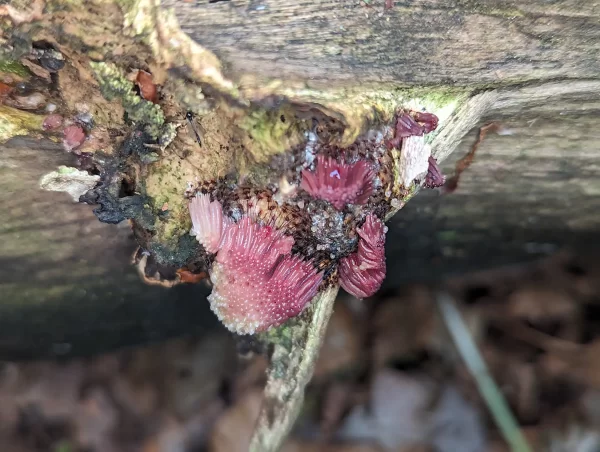
Strumpshaw Fen – evening of 9th June 2024
S. flavogenita has a distinctive columella plate [1] which seem to be present ? in this photo — black tips of the sporangia left of centre.
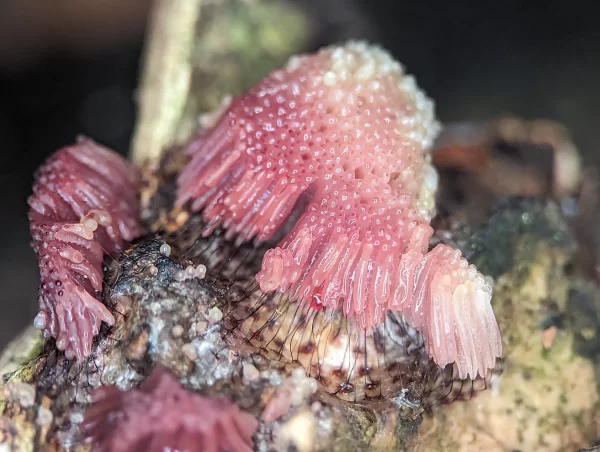
Strumpshaw Fen – evening of 9th June 2024
Another mature Stemonitis cluster in spore mass with the capillitium surface net visible.
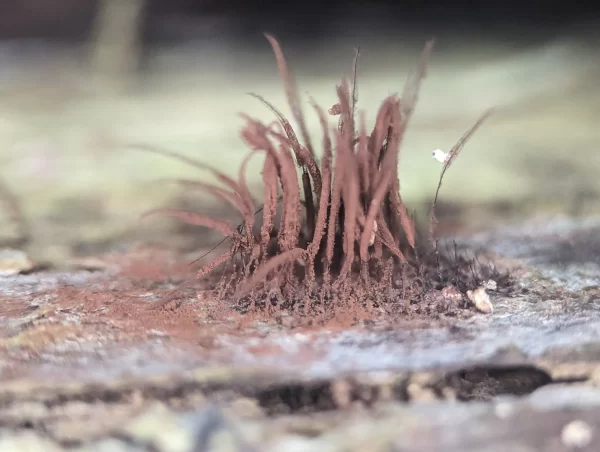
Strumpshaw Fen – 9th June 2024
16th June
The visit to the reserve was quite exciting this day because I spotted a green slime mould!
At the Zen Zone white Stemonitis sporangia.
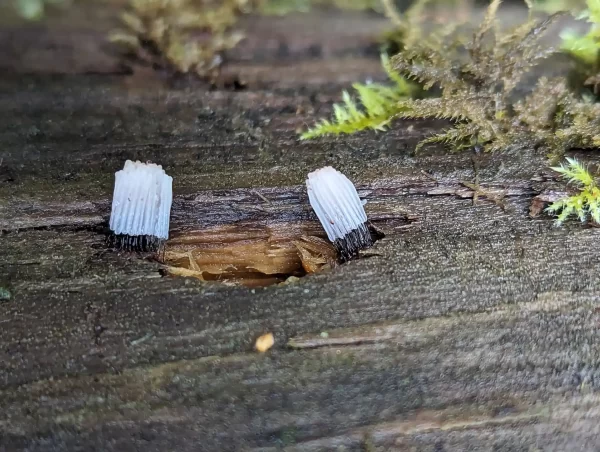
Strumpshaw Fen – 9.30am 16th June 2024
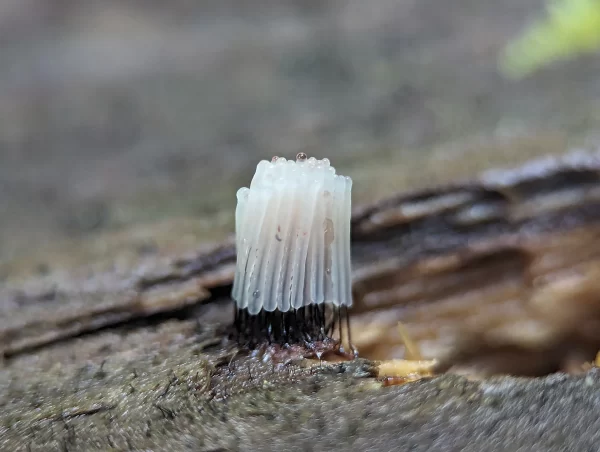
Strumpshaw Fen – 9.30am 16th June 2024
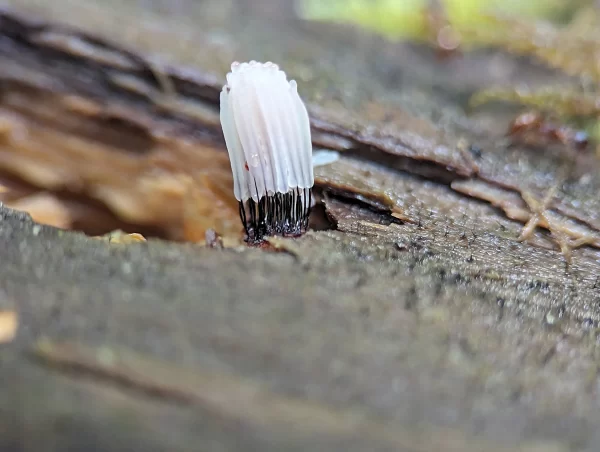
Strumpshaw Fen – 9.30am 16th June 2024
And nearly two hours later — at the end of our visit — the sporangia had fused together with rose tints.

Strumpshaw Fen – 11.20am 16th June 2024
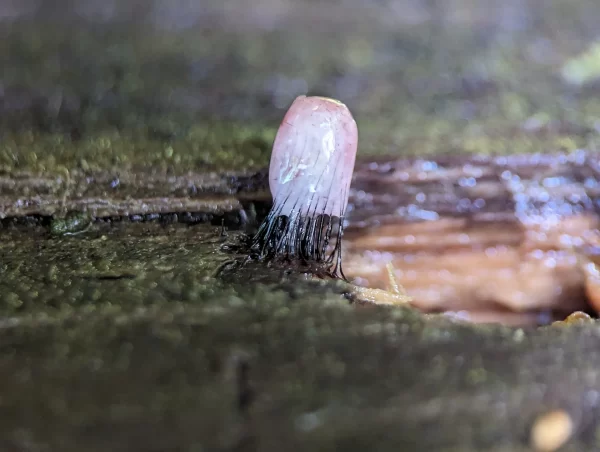
Strumpshaw Fen – 11.20am 16th June 2024
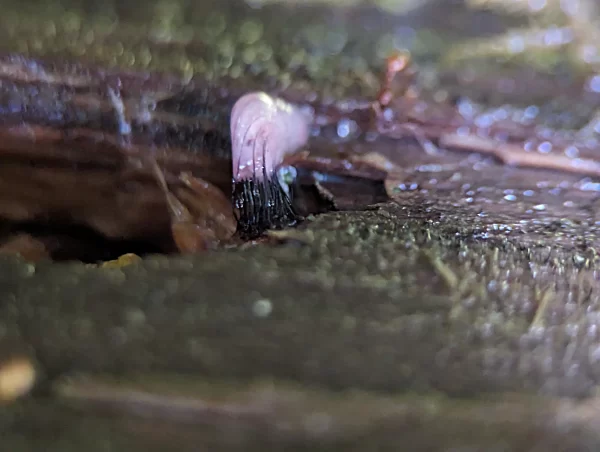
Strumpshaw Fen – 11.20am 16th June 2024
At Basecamp more Stemonits sporangia on the same log (see 9th June above) that we often see slime moulds. The photo below shows a some sporangia and some white translucent slime which could be Stemonitis plasmodium?
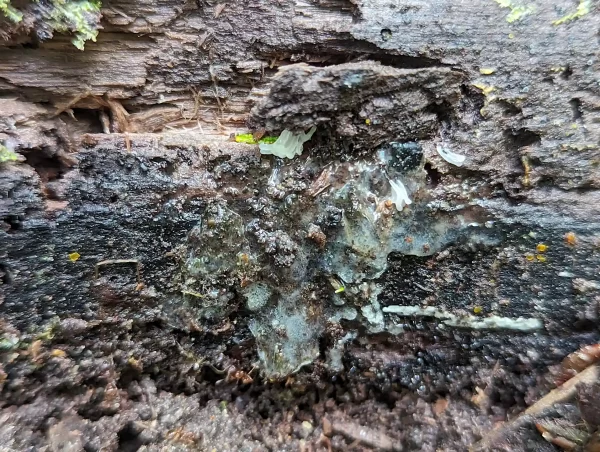
Strumpshaw Fen – 16th June 2024
In the photo below, the larger cluster of Stemonitis sporangia is beginning to fuse together at the top.
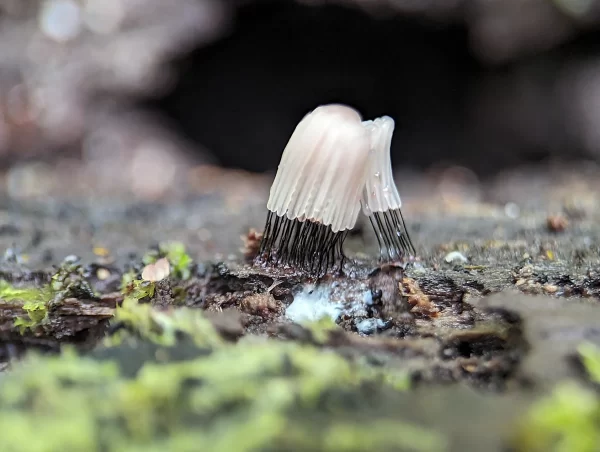
Strumpshaw Fen – 9.55am 16th June 2024
And later at the end of the visit, both sporangia clusters had fused together and turned to a wonderful trunslucent rose and carmine.
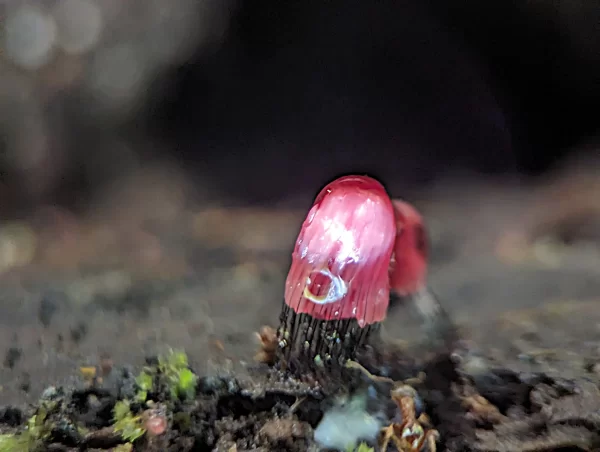
Strumpshaw Fen – 11.15am 16th June 2024
But… on the same log a wonderful find — green sporangia that I have never seen before that could be Cribraria aurantiaca ! (more on this slime mould)
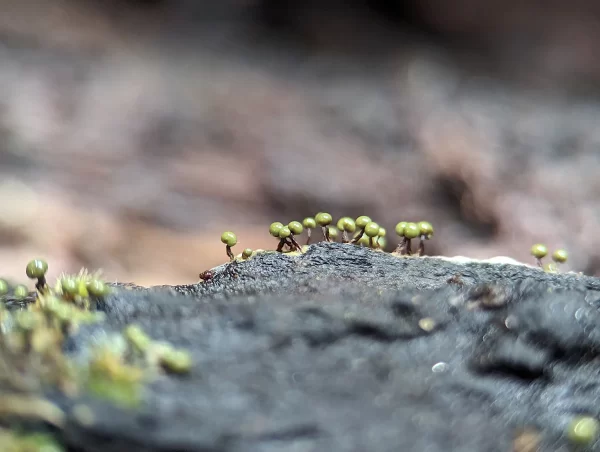
Strumpshaw Fen – 16th June 2024
Near The Outpost some unidentified young white sporangia.
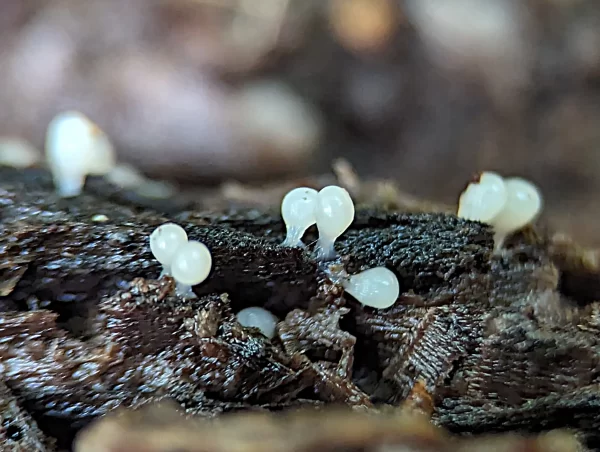
Strumpshaw Fen – 16th June 2024
And more excitement — in the Trail End area, on a fallen branch — what looks like it could be Physarum leucophaeum sporangia?
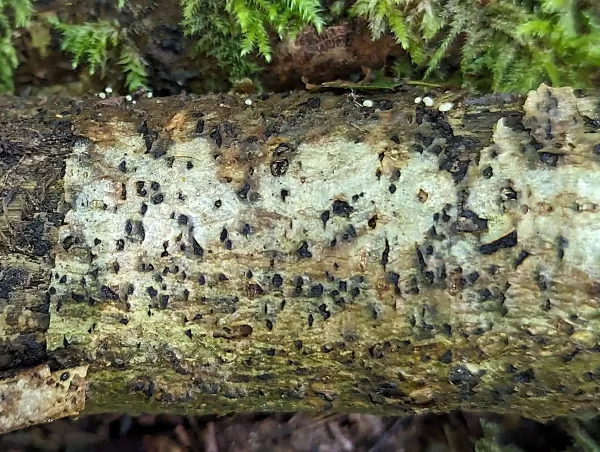
Strumpshaw Fen – 16th June 2024
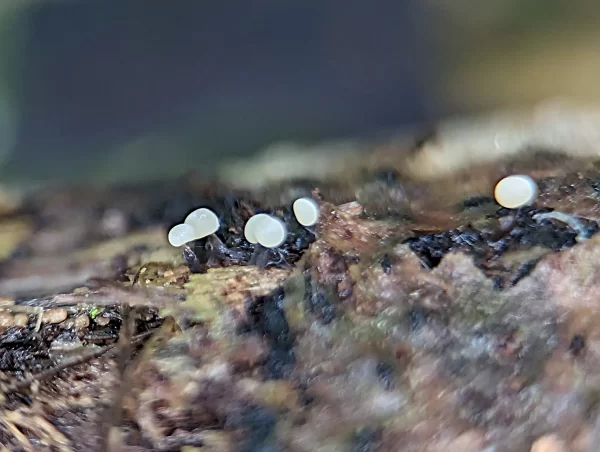
Strumpshaw Fen – 16th June 2024
23rd June
We didn’t see much this day.
Near Basecamp we spotted what was most likely young Arcyria cinerea sporangia — some of which had fine hair-like growths which would be a fungal parasite.
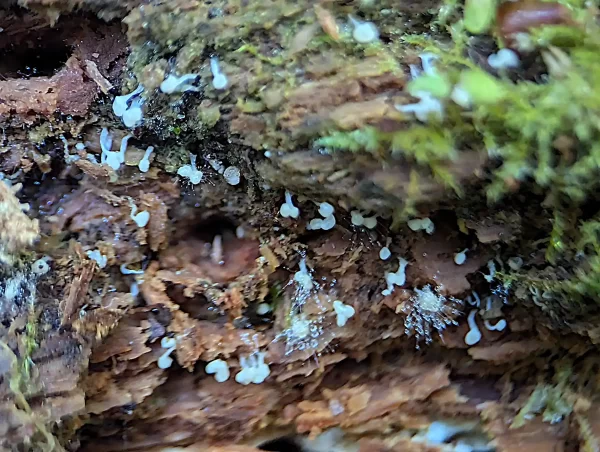
Strumpshaw Fen – 23rd June 2024
Also some old Lycogala epidendrum aethalia surrounded by spore mess.
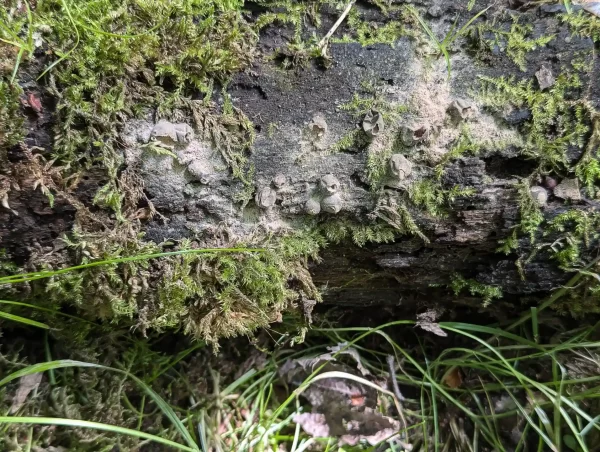
Strumpshaw Fen – 23rd June 2024
Near The Outpost — some young Arcyria cinerea sporangia.
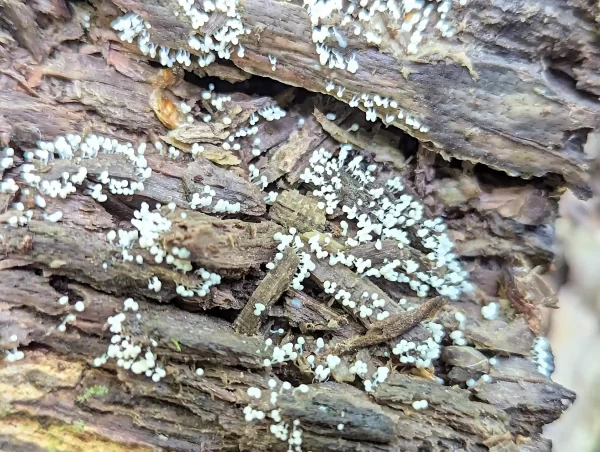
Strumpshaw Fen – 23rd June 2024
After The Outpost some Fuligo septica. The photo below shows plasmodium and developing aethalia.
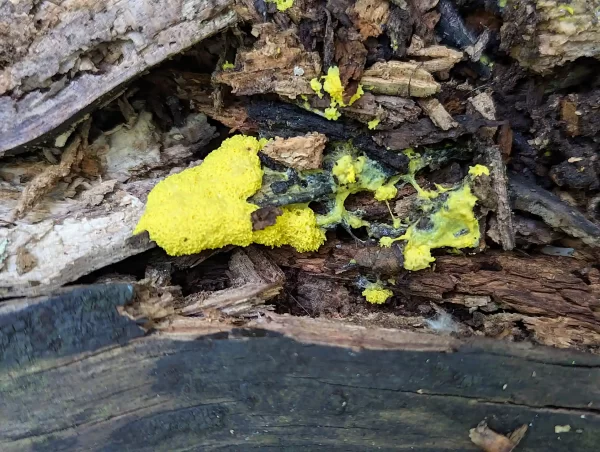
Strumpshaw Fen – 23rd June 2024
The photo below shows a developing aethalium with a trail of white translucent hypothallus.
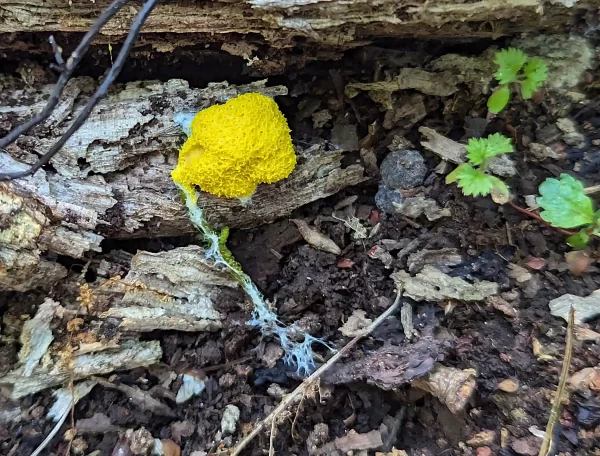
Strumpshaw Fen – 23rd June 2024
The hypothallus is a layer that the slime mould plasmodium secretes on its substrate as it moves around.
[1] The Myxomycetes of Britain and Ireland 2020 – An Indentification Handbook – Bruce Ing
Strumpshaw Fen is a nature reserve managed by the RSPB adjacent the River Yare, east of Norwich in Norfolk
RSPB Strumpshaw Fen webpage RSPB Strumpshaw Fen Wikipedia entry